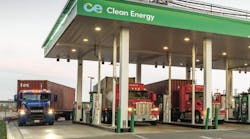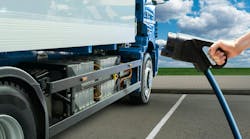These days it seems you can’t talk about trucking without also talking about connectivity. Connectivity via telematics devices, vehicle sensors, mobile devices and more, provides fleets with a wealth of information about how the truck is behaving and can show when it is operating outside of “normal’ parameters. This can allow fleet managers to spot impending problems and take action prior to a breakdown. In addition, connectivity can also change the way trucks operate and allow for things like platooning.
We thought that connectivity was a pretty important subject, so we made it the star of our second technology day held in conjunction with Run on Less Regional.
Speaking during our webinar on connectivity, Brendan Wiggins, fleet analytics manager, PepsiCo, said that baseline telematics are on most trucks and that truck OEMs are building them into their vehicles. “We are starting to look at growing what the sensors are monitoring.”
Joyce Tam, vice president, programs and product management, Peloton, says that one problem with connectivity is that “we have too much data and not enough intelligence.” More data is not necessarily better; rather fleets need to make sense of the data they have and determine what is important and what can be ignored.
She said that today telematics is the norm and vehicle-to-vehicle connectivity is a reality. “Now we need to leverage it to reduce costs and improve safety. The journey to more automation should provide even more productivity and safety improvements.”
Amit Saini, vice president, Enterprise AI Services, Noodle.ai, said one challenge regarding data is that it tends to be siloed. “There may be five or six different systems that don't talk to teach other. Success is less of a technology challenge and more of a collaboration challenge.”
He said there are strong reasons for fleets to invest in connectivity including reducing downtime. However, he does not think fleets have a good grasp on downtime. “True downtime is not just the time spent in the shop. It is the time since the truck was last able to leave one load and start on the next.”
We closed out the webinar asking our panelists to talk about where they think the industry will be regarding connectivity in the future. Robert Samuel, EBU Digital Commercial Director, Cummins Inc., “We will be getting adoption rates up and looking for data logger data not just heartbeat data. The next 20 years will be a long journey to get good analytics and know how to use the data.”
In 20 years, Tam expects to see packs of trucks going down the road “with fewer but more skilled, specialized drivers.”
Regardless of what the future brings, connectivity is already a reality in the trucking industry. It makes sense for all of us to find ways that connectivity can allow us to operate more efficiently whether that is coaching drivers, fixing problems before the cause on the road breakdowns and even taking advantage of platooning opportunities.



